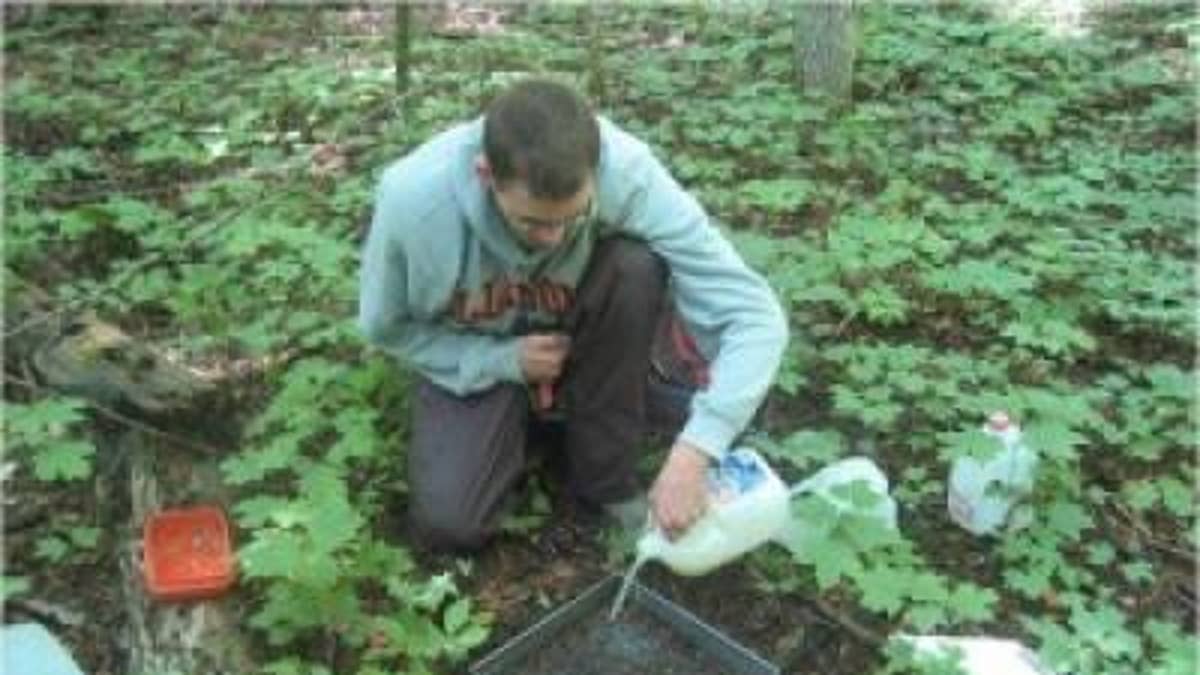
Scott Loss uses a liquid-mustard mixture to sample earthworms. The mustard contains a skin irritant that causes earthworms to come to the surface. A recent decline in ovenbirds (also known as Seiurus aurocapilla), a ground-nesting migrat (Sara Schmelzer Loss.)
DENVER – Gardeners and farmers may love earthworms for their rich castings and composting help, but in forests near the Great Lakes, the creatures are alien invaders.
No earthworms are native to North America's northern forests (massive ice age glaciers kept the land worm-free). But in the years since settlers arrived, 15 earthworm species have appeared in Minnesota, from Europe and Asia. Some of the invasive species are changing local forests, scientists have discovered.
"After these mixers come in, there's a loss in plant species," said Kit Resner, graduate student and soil biogeochemist at the University of Minnesota and lead study author.
The earthworms eat away at the puffy duff layer blanketing the forest floor, where species such as salamanders and ovenbirds live, Resner reported Sunday (Oct. 27) at the Geological Society of America's annual meeting. Duff is fallen organic material, such as leaves, slowly decomposing on the ground.
And in the sugar maple forests near the Great Lakes, the churning worms actually compact the upper soil layers instead of loosening them, Resner said.
"People assume that soils are homogeneous across all areas, and they're really not," Resner told LiveScience. "In agricultural areas, where you have compacted soils, [earthworms] aerate the soils. Forest soils are really different than agricultural soils. Here, we have a structure. And in this case, they actually compact it."
The compaction decreases downward water flow through the soil, drying out the upper soil layers, Resner and her colleagues found. The worms also change the soil chemistry, raising levels of calcium, potassium and phosphorous.
The net result is a loss of understory plants the young trees, ferns and wildflowers that grow in the spaces between big trees. And without the duff layer, some animals lack a place to live.
"It's like they've been pushed out of their homes," Resner said.
